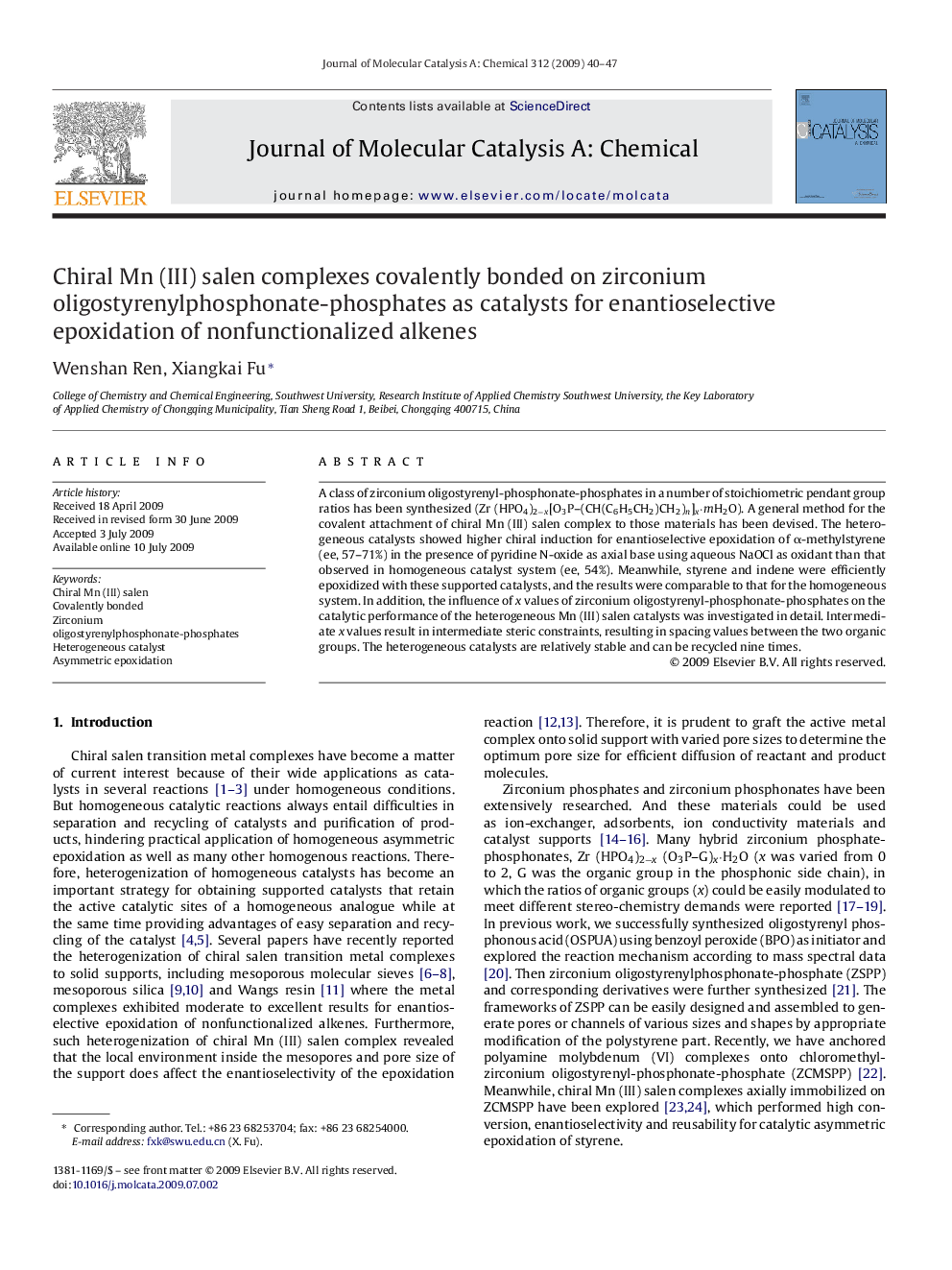| Article ID | Journal | Published Year | Pages | File Type |
|---|---|---|---|---|
| 67077 | Journal of Molecular Catalysis A: Chemical | 2009 | 8 Pages |
A class of zirconium oligostyrenyl-phosphonate-phosphates in a number of stoichiometric pendant group ratios has been synthesized (Zr (HPO4)2−x[O3P–(CH(C6H5CH2)CH2)n]x·mH2O). A general method for the covalent attachment of chiral Mn (III) salen complex to those materials has been devised. The heterogeneous catalysts showed higher chiral induction for enantioselective epoxidation of α-methylstyrene (ee, 57–71%) in the presence of pyridine N-oxide as axial base using aqueous NaOCl as oxidant than that observed in homogeneous catalyst system (ee, 54%). Meanwhile, styrene and indene were efficiently epoxidized with these supported catalysts, and the results were comparable to that for the homogeneous system. In addition, the influence of x values of zirconium oligostyrenyl-phosphonate-phosphates on the catalytic performance of the heterogeneous Mn (III) salen catalysts was investigated in detail. Intermediate x values result in intermediate steric constraints, resulting in spacing values between the two organic groups. The heterogeneous catalysts are relatively stable and can be recycled nine times.
Graphical abstractThe chiral Mn (III) salen complex was supported on ZSPP by a covalent grafting method. These heterogeneous catalysts show comparable or even higher enantioselectivities than homogeneous chiral Mn (III) salen. The x values of ZSPP play an important role in ee values and yields of epoxidations. The heterogeneous catalysts are relatively stable and can be recycled nine times.Figure optionsDownload full-size imageDownload as PowerPoint slide
